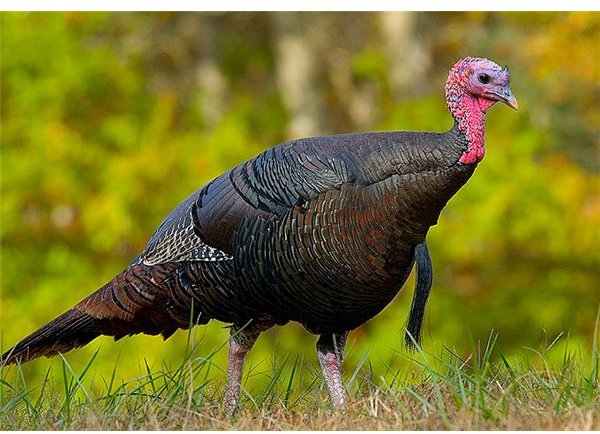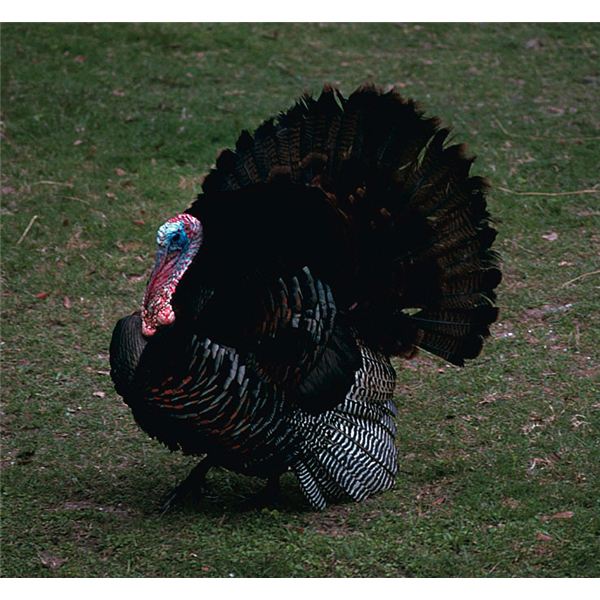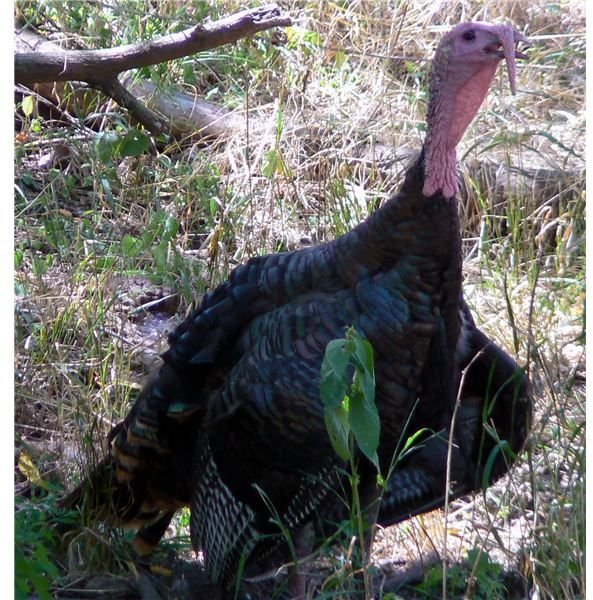About the Wild Turkey (Meleagris Gallopavo): Range, Habitat, Diet & Behavior
Description
Wild Turkeys are large birds. They reach up to 48 inches long and weigh up to 25 pounds. They can have up to a five foot wing span. Wild Turkeys are related to pheasants and like pheasants, they have a large tail that can raise to display their plumage. The males are larger than the females. Wild Turkeys have dark feathers on their bodies and no feathers are their heads. The female has bluish gray skin on her head and the male’s head can be either blue, red or white. The color of the male’s head is dependent on the season. The male has a flap of red skin under his chin that is called a wattle. Males also have a beard of feathers on their chests.
Images


Behavior
Wild Turkeys are social birds that live together in flocks. The males and females live in separate flocks, only coming together during mating season. Wild Turkeys spend the majority of the daytime hours on the ground. They are fast runners and will often run from predators. When the need arises, they take flight to escape danger, flying at speeds of up to 60 miles per hour. They also fly up to high branches where they roost at night. If predators come close to their roosting area, they remain extremely still to prevent detection. Wild Turkeys have excellent hearing and eyesight. They are always very alert to their surroundings, which makes them very efficient at escaping from predators.
Habitat and Diet
In the 1900’s, hunting and habitat loss brought the existence of Wild Turkeys to alarmingly low numbers. Reintroduction and conservation has brought the species back to safe numbers. Wild Turkeys can currently be found throughout the Eastern United States in forests and open woodlands. They are omnivores. Their diets consist of vegetation, nuts, seeds, insects and small vertebrates.
Mating
Mating takes place only once a year in the early spring. The males and females who normally live separately, come together during mating system. The males call out to the females. Their calls are so loud that they can be heard a mile away. Wild Turkeys are polygamous. The males mate with many different females. Once mating is over, the males leave. The females find a safe hidden spot on the ground to lay their eggs and keep a watchful eye over them. The babies called poults can eat and travel 24 hours after they hatch. They stay under their mothers care until the next breeding season. The mothers are protective and will fight with predators to save the lives of her young.
Scientific Classification
Scientific Name: Meleagris gallopavo
Kingdom: Animalia
Pylum: Craniata
Class: Aves
Order: Galliformes
Family: Phasianidae
Genus: Meleagris
